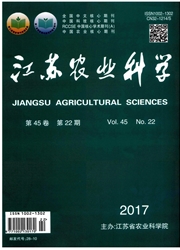

 中文摘要:
中文摘要:
包括 ascorbate peroxidase, superoxide dismutase,过氧化氢酶和 peroxidase,反应的氧种(ROS ) scavengers 是在估计有机体回答到许多关於生命、不能生活的压力的最通常使用的 biomarkers。在这研究,我们克隆 866 bp GST (phi ) 在次要的 Lemna 的基因并且与另外的 ROS scavengers 比较在 75 mol/L 镉集中下面调查了它的特征,表示和酶的活动。GST (phi ) 基因表示模式类似于 ROS 的另外的 scavengers 的那些。这建议 GST (phi ) 可能涉及回答应力到重金属(镉) 并且它的表示水平能在监视镉污染被用作简历指示物。
 英文摘要:
英文摘要:
Reactive oxygen species (ROS) scavengers, including ascorbate peroxidase, superoxide dismutase, catalase and peroxidase, are the most commonly used biomarkers in assessing an organisms' response to many biotic and abiotic stresses. In this study, we cloned an 866 bp GST(phi) gene in Lemna minor and investigated its characteristics, expression and enzymatic activities under 75 lamol/L cadmium concentrations in comparison with other ROS scavengers. GST(phi) gene expression patterns were similar to those of other scavengers of ROS. This suggests that GST(phi) might be involved in responding to heavy metal (cadmium) stress and that its expression level could be used as a bio-indicator in monitoring cadmium pollution.
 同期刊论文项目
同期刊论文项目
 同项目期刊论文
同项目期刊论文
 期刊信息
期刊信息
